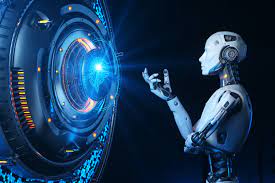Fine-tuning and optimizing GPT chatbots for specific tasks involves tailoring the pre-trained GPT model to the desired task, such as customer support, FAQ assistance, or content recommendation. Here are the steps to fine-tune and optimize GPT chatbots for specific tasks:
- Task definition: Clearly define the specific task or objective of the chatbot. Identify the input format, expected output, and any additional requirements or constraints.
- Dataset collection: Gather a task-specific dataset that aligns with the defined objective. This dataset should consist of examples relevant to the task, including user inputs and corresponding desired responses. The dataset can be collected from various sources, including existing customer interactions, manual annotations, or synthetic data generation.
- Dataset preprocessing: Preprocess the collected dataset to ensure its quality and consistency. Clean the data, remove duplicates, correct errors, and anonymize any sensitive information. Structure the data as input-response pairs suitable for training the chatbot.
- Fine-tuning setup: Initialize the pre-trained GPT model with its weights and architecture. Modify the model’s output layer to match the desired response format for the specific task. Typically, this involves adjusting the model’s token embeddings and adding task-specific output layers.
- Training procedure: Train the modified GPT model using the task-specific dataset. Fine-tuning involves updating the model’s parameters by minimizing a loss function that measures the discrepancy between the model’s predicted responses and the desired responses in the training dataset. Use optimization algorithms, such as stochastic gradient descent (SGD) or Adam, to iteratively update the model’s parameters.
- Hyperparameter tuning: Experiment with different hyperparameter settings during fine-tuning to optimize the model’s performance. Adjust parameters such as learning rate, batch size, number of training steps, or regularization techniques. Conduct systematic hyperparameter search or use techniques like grid search or random search to find the best configuration.
- Evaluation and iteration: Evaluate the fine-tuned model using evaluation metrics suitable for the specific task, such as accuracy, F1 score, or precision and recall. Collect user feedback and iterate on the training process to refine the model’s responses and address any limitations or errors.
- Domain adaptation: If the chatbot needs to operate within a specific domain, consider performing domain adaptation. Fine-tune the model on additional domain-specific data to make it more effective in handling domain-specific language, terminology, or user intents.
- Continuous learning: Enable the chatbot to learn and improve over time by incorporating mechanisms for continuous learning. Regularly update the model with new data, retrain it periodically, and implement techniques like online learning or active learning to adapt to evolving user needs and preferences.
- Multitask learning (optional): If the chatbot needs to handle multiple related tasks, consider applying multitask learning. Train the model on a combined dataset that includes examples from multiple tasks. This allows the model to learn shared representations and leverage knowledge from different tasks, potentially improving performance across all tasks.
- Post-processing and response refinement: Apply post-processing techniques to further refine the model’s generated responses. This may involve additional language correction, context-aware formatting, or incorporating business-specific rules or guidelines to ensure the responses align with the desired quality and style.
To fine-tune and optimize GPT chatbots for specific tasks, such as customer support or information retrieval, you can follow these steps:
- Define Your Task: Clearly define the specific task you want the chatbot to perform. For example, it could be answering customer queries, providing product recommendations, or assisting with technical support.
- Create a Task-Specific Dataset: Collect or create a dataset that is specific to your task. This dataset should consist of examples that demonstrate the desired behavior and cover a wide range of possible user queries. Ideally, the dataset should be representative of the types of conversations the chatbot will encounter.
- Annotate the Dataset: Annotate the dataset with relevant labels or annotations to indicate the correct responses for each example. This helps guide the model during fine-tuning by providing explicit supervision signals.
- Prepare the Dataset: Preprocess the dataset, including tokenization, lowercasing, and formatting the input-output pairs for training. Ensure the dataset is properly formatted and aligned.
- Fine-tune the GPT Model: Train the GPT model using the task-specific dataset. Fine-tuning involves initializing the pretrained GPT model with the weights learned during pretraining and further training it on the task-specific dataset. During fine-tuning, the model adapts to the task-specific data and learns to generate contextually appropriate responses.
- Choose Training Parameters: Select appropriate hyperparameters for training, including learning rate, batch size, and number of training epochs. These parameters can impact the model’s performance and training stability, so it may be necessary to experiment and adjust them to achieve optimal results.
- Evaluate Model Performance: Evaluate the performance of your fine-tuned model using appropriate evaluation metrics, such as accuracy, F1 score, or task-specific metrics. Use a validation set or cross-validation to assess the model’s performance and identify areas for improvement.
- Iterate and Refine: Analyze the model’s performance, review incorrect or suboptimal responses, and iteratively refine the model. Incorporate user feedback and continuously update and improve the training dataset to address any shortcomings.
- Transfer Learning: Consider leveraging transfer learning techniques. If you have a pretrained GPT model that is relevant to your task, you can fine-tune it using a smaller dataset specific to your task. This can help speed up training and improve performance, especially when task-specific data is limited.
- Incorporate User Feedback: Continuously collect user feedback on the chatbot’s responses and interactions. Use this feedback to identify areas for improvement and iteratively refine the model and training process.
By following these steps, you can fine-tune and optimize GPT chatbots for specific tasks, enhancing their performance and effectiveness in delivering task-specific responses and meeting user expectations.
SHARE
